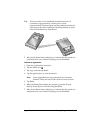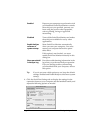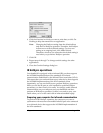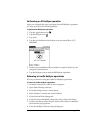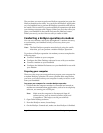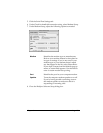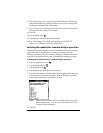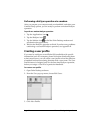
Chapter 8 Page 175
6. Click the direction in which you want to write data, or click Do
Nothing to skip data transfer for an application.
Note: Changing the HotSync setting from the default affects
only the next HotSync operation. Thereafter, the HotSync
Actions revert to their default settings. To use a new
setting on an ongoing basis, click Make Default.
Thereafter, whatever you selected as the default setting is
used when you perform a HotSync operation.
7. Click OK.
8. Repeat steps 4 through 7 to change conduit settings for other
applications.
9. Close the Conduit Settings dialog box.
IR HotSync operations
Your handheld is equipped with an infrared (IR) port that supports
the IrCOMM implementation of the standards for infrared
communication established by the Infrared Data Association (IrDA).
This means that you can beam data to any other device that supports
the IrCOMM implementation of the IrDA standards. Most
importantly, you can use the IR port to perform HotSync operations.
When you use the IR port on your handheld to perform HotSync
operations, you don’t need your cradle. You simply enable infrared
communication on your computer and your handheld and then
perform an IR HotSync operation. So there’s no need to carry your
cradle when you’re on the road with an infrared-enabled laptop.
Preparing your computer for infrared communication
To perform an IR HotSync operation, the computer you want to
synchronize with must have an enabled infrared port or be connected
to an infrared device that supports the IrCOMM implementation of
the IrDA standards.




